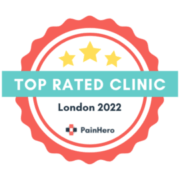
The best therapy for piriformis syndrome typically includes a combination of physical therapy, stretching, and manual techniques. Here’s a breakdown of the most effective types of therapy:
🔑 1. Physical Therapy (PT)
This is the core treatment and usually the most effective.
Goals:
- Reduce sciatic nerve irritation
- Stretch and release the piriformis muscle
- Improve posture, strength, and mobility
Common PT components:
- Stretching: Targeting piriformis, hip flexors, hamstrings, and glutes
- Strengthening: Focus on glutes, core, and hip stabilizers
- Neuromuscular re-education: Improves movement patterns to prevent recurrence
👐 2. Manual Therapy
Performed by a physical therapist, chiropractor, or massage therapist.
Techniques include:
- Myofascial release: Targets muscle tightness
- Trigger point therapy: Focuses on painful knots in the piriformis
- Deep tissue massage: Reduces muscle tension
- Soft tissue mobilization
🧘 3. Stretching & Mobility Work (At Home)
Daily stretching is vital. The piriformis stretch is key:
- Lying down, cross the affected leg over the other thigh and pull the opposite knee toward the chest.
- Hold 20–30 seconds, repeat 2–3 times a day.
Other helpful stretches:
- Seated piriformis stretch
- Pigeon pose (yoga)
- Hip flexor and hamstring stretches

